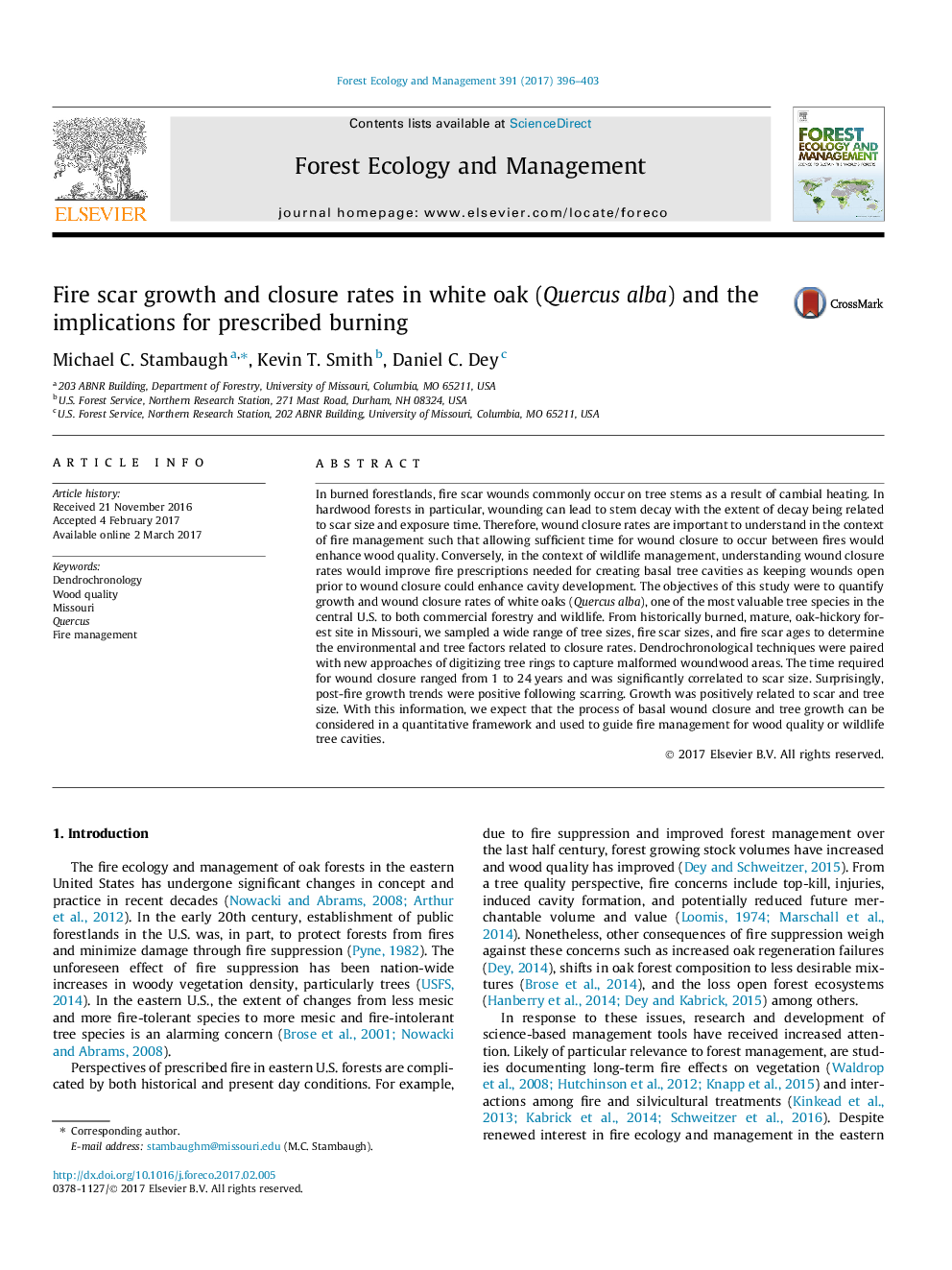| کد مقاله | کد نشریه | سال انتشار | مقاله انگلیسی | نسخه تمام متن |
|---|---|---|---|---|
| 6459477 | 1421367 | 2017 | 8 صفحه PDF | دانلود رایگان |

- Growth and fire scars on white oaks were measured by digitizing tree rings.
- Duration of scar closure ranged from 1 to 24Â years and was correlated to scar size.
- Growth in the year of the fire scar was related to scar size, tree size, and tree age.
- Tree and scar characteristics could guide prescribed fire and forest management.
In burned forestlands, fire scar wounds commonly occur on tree stems as a result of cambial heating. In hardwood forests in particular, wounding can lead to stem decay with the extent of decay being related to scar size and exposure time. Therefore, wound closure rates are important to understand in the context of fire management such that allowing sufficient time for wound closure to occur between fires would enhance wood quality. Conversely, in the context of wildlife management, understanding wound closure rates would improve fire prescriptions needed for creating basal tree cavities as keeping wounds open prior to wound closure could enhance cavity development. The objectives of this study were to quantify growth and wound closure rates of white oaks (Quercus alba), one of the most valuable tree species in the central U.S. to both commercial forestry and wildlife. From historically burned, mature, oak-hickory forest site in Missouri, we sampled a wide range of tree sizes, fire scar sizes, and fire scar ages to determine the environmental and tree factors related to closure rates. Dendrochronological techniques were paired with new approaches of digitizing tree rings to capture malformed woundwood areas. The time required for wound closure ranged from 1 to 24Â years and was significantly correlated to scar size. Surprisingly, post-fire growth trends were positive following scarring. Growth was positively related to scar and tree size. With this information, we expect that the process of basal wound closure and tree growth can be considered in a quantitative framework and used to guide fire management for wood quality or wildlife tree cavities.
Journal: Forest Ecology and Management - Volume 391, 1 May 2017, Pages 396-403